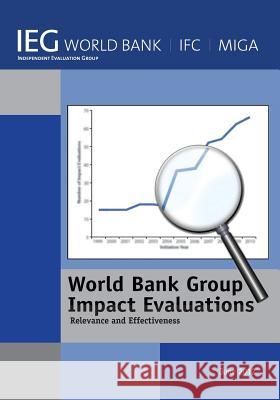World Bank Group Impact Evaluations: Relevance and Effectiveness » książka
World Bank Group Impact Evaluations: Relevance and Effectiveness
ISBN-13: 9780821397176 / Angielski / Miękka / 2013 / 164 str.
Impact evaluation has grown more popular as a method for identifying the causal links between interventions and outcomes. These kind of evaluations assess changes that can be attributed to a particular intervention. Both innovations in statistical methods and the demand for evaluations that can measure such development results are increasing. The World Bank Group is the largest producer of impact evaluations among all development institutions. Thus, IEG has evaluated the relevance, quality, and influence of World Bank and IFC impact evaluations. IEG finds that the World Bank Group portfolio of impact evaluations is largely aligned with sector strategies and project objectives. Selection and coordination of impact evaluations has been improving. Most World Bank impact evaluations meet either medium or high quality standards, and about half of IFC impact evaluations did. Issues related to funding, staff capacity, and incentives, however, constrain the scope and coverage of impact evaluations in the Bank Group. IEG makes five recommendations to strengthen the Bank Group's impact evaluation efforts, revolving around consistency, coordination, quality standards, and ensuring operational relevance. Both development and evaluation professionals will find valuable lessons in this evaluation. There are real benefits from impact evaluations, including their influence on development practices through contributions to project assessment and design of future projects. Thus, development practitioners engaged in designing projects, evaluators interestedin using similar methodology, and the general evaluation community will be able to use the lessons IEG sets out in this report.











